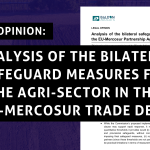The Green Deal Industrial Plan (GDIP), and proposals for a Net-Zero Industry Act (NZIA) and a Critical Raw Materials Regulation (CRMR) are presented as drivers for the EU’s ambitions and actions towards net-zero by supporting industrial manufacturing of key technologies and ensuring the EU’s easy access to the critical raw materials needed to achieve net-zero.
We welcome this increased attention to the urgent need to support green industry, which can provide solutions to several environmental and social crises we face. Sustainable corporate behaviour and decisions are central to achieving environmental and societal objectives, and clean techniques and technologies must be prioritised. The approach developed has some encouraging elements, and some worryingly negative elements that cannot be ignored as the Acts go through co-decision processes.
The priority issues needing addressing are:
1. Reframing EU competitiveness within societal and environmental crises
Implementation of the EU industrial strategy and the resulting GDIP, NZIA and CRMR have evolved into tools of EU industrial competitiveness, rather than delivery of the European Green Deal objectives. Competitiveness is presented as possible only through a deregulation drive and easing access to massive sums of public funds with little to no environmental and social conditions attached. Supporting EU green technology industries is important but the proposed EU tools place more priority on “Made in EU” than on wider environmental protection. The worsening social and environmental crises we are experiencing require safeguards, clear rules of the game for corporate behaviour and decision-making, and companies’ clear contributions to a social and just transformation, for example by ramping up ambition on legislation already under discussion.
2. Green deal means green deal
The European Green Deal sets out clear objectives on climate, resources and zero pollution, all inter-related issues needing addressing together and in a balanced way to avoid shifting burdens from one impact to others. The three documents focus on achieving net zero through technological decarbonisation without addressing the risk of driving up demand for materials. The EU needs a clearer path to climate-neutrality, by building an energy system based 100% on renewables, including wind and solar energy, while also addressing the EU’s historical and continuing over-consumption of energy and natural resources.
What we need:
- An integrated approach to climate, biodiversity and zero pollution efforts on industrial policy, and policies on products, production processes and due diligence;
- Demand-side elements integrated into policies to support reduced energy and resource use, such as on mobility, housing/construction, and products, building upon REPowerEU and the winter preparedness package;
- Energy technologies prioritised according to their contribution to climate and environmental objectives, with for instance solar, wind and heat pumps prioritised over carbon capture and storage, which plays a limited role in the economic transition. Nuclear must be completely excluded;
- NECPs that take an integrated approach to climate, biodiversity and zero pollution so that Member States develop a set of synergistic policies and measures supporting societal change.
3. Ensure a coherent and comprehensive EU industrial policy toolbox giving
direction and speed of travel
The EU’s industrial policy toolbox is under development, and needs better balance with other pieces of legislation. Many legislation proposals already in co-decision processes could provide clarity to industry on what is expected of it and a level playing field through clear rules of the game, at EU and international levels. Strong environmental requirements in permits for industrial plants, ecodesign of products and production processes, responsible corporate behaviour through due diligence, as well as energy use reduction and increased renewables, will need to provide the regulatory certainty sought by private investment to de-risk business decisions and avoid stranded assets.
What we need:
- The Ecodesign Regulation to prioritise resource- and energy-intensive materials (“intermediary products”) and products and swift implementation of an integrated approach to reducing their environmental and social impacts according to key hotspots;
- The Industrial Emissions Directive (IED) and Corporate Sustainability Due Diligence Directive (CSDDD) to take an integrated approach, aligning with Green Deal objectives by balancing climate, resources/materials and zero pollution together for more costeffective performance improvement
- Align with the Electricity Market Design reform proposal to move towards valuing demand and supply sides equally, and apply demand-side flexibility to industry (enabling constant 100% renewable energy, to match renewable energy supply with flexible demand in real time);
- Requirements for plans are in the EU Climate Law and the EU ETS, in the proposed IED and CSDDD, and in implementation of the EU’s industrial strategy. Society needs clarity from companies on how they will reach Green Deal objectives. These tools must provide coherence by ensuring that each one makes reference to the others in final legislation so that companies can satisfy requirements with one, integrated document, especially as companies will find an integrated approach more cost-effective.
4. Greening trade and development through collaboration
Partner countries must benefit from the full value chain of CRMs and of renewables-based economy and should not be restricted to being raw materials providers resulting in increased negative impacts on local communities and Indigenous peoples’ lands. Developing countries must be given the chance to build up their own green industries.
What we need
- Scale up climate finance and technology transfer to developing countries in line with equity to support decarbonisation and a just transition;
- The Global Gateway Strategy needs to reorient around partner countries’ and communities’ interests to support a collaborative and co-beneficial approach. An improved transparency of the Global Gateway by publicly disclosing the complete list of
projects, their social and environmental impact assessment, and the mandate and activity of the proposed new European Export Credit Facility is required; - A reorientation of the Global Gateway Business Advisory Group to a multi-stakeholder group which includes civil society;
- An approach of supporting developing countries’ sustainable development pathways, giving a boost to their nascent green industries and circular economy approaches, and powering key industries and sectors for developing country partners’ socio-economic transformation;



